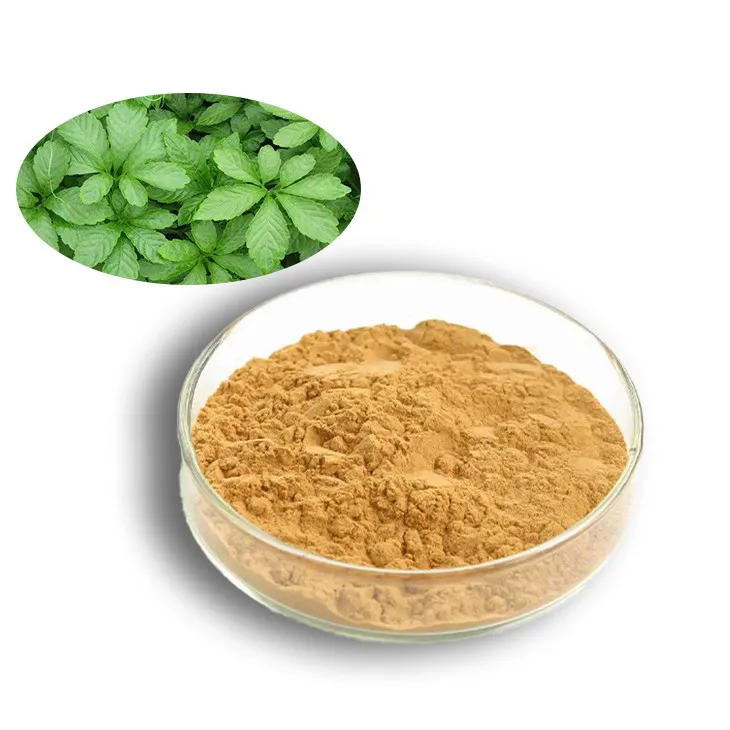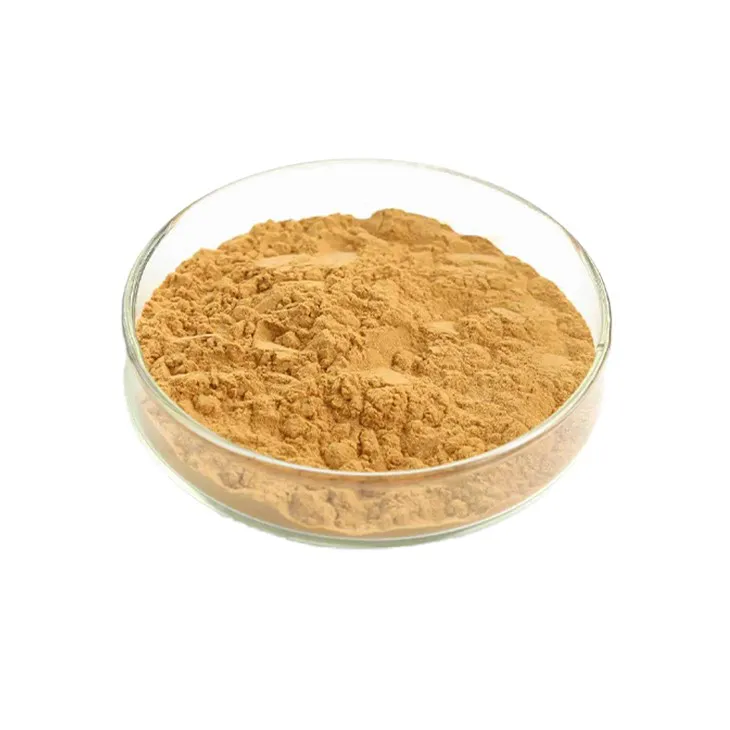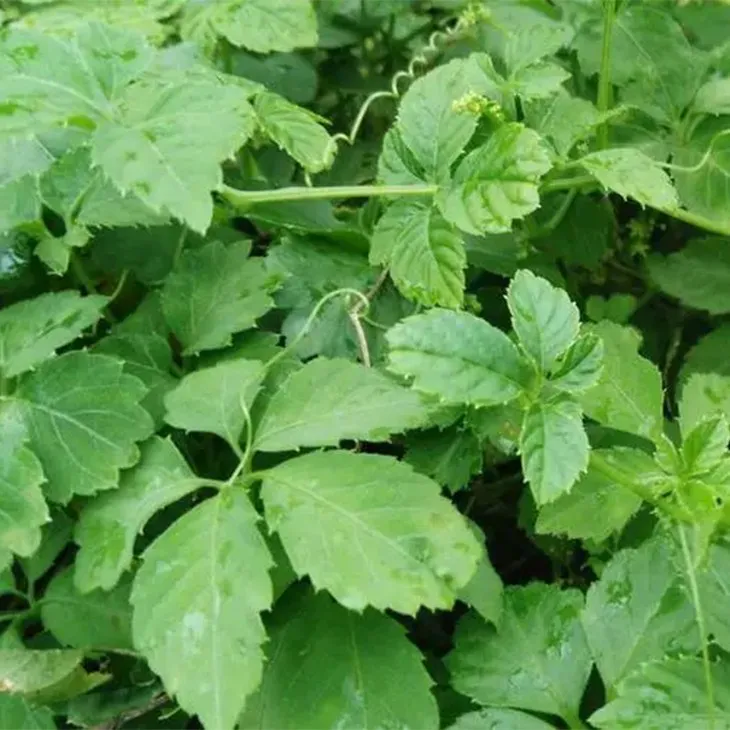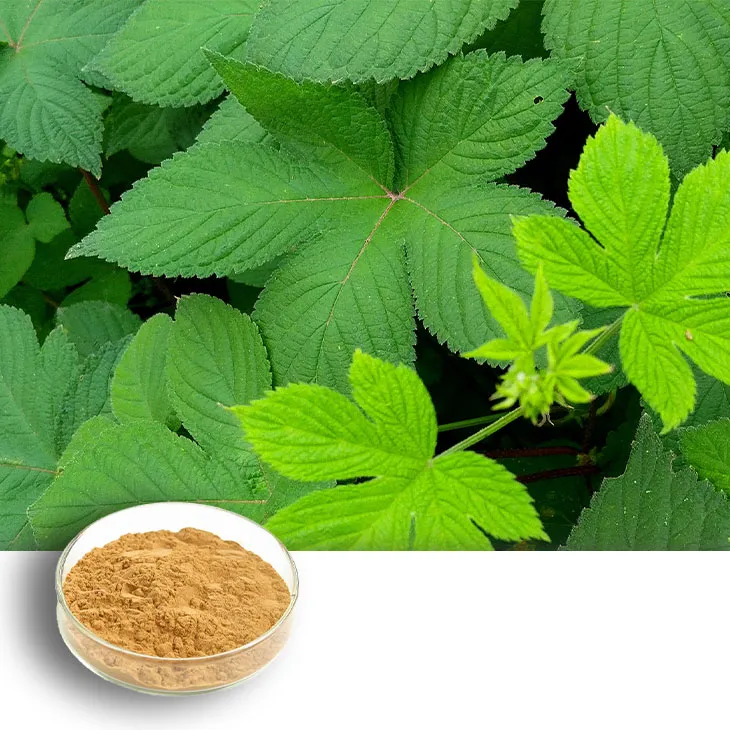- 0086-571-85302990
- sales@greenskybio.com
The process of extracting Gynostemma pentaphyllum functional components from Gynostemma pentaphyllum extract.
2024-11-29

1. Introduction to Gynostemma pentaphyllum
Gynostemma pentaphyllum is a remarkable medicinal plant that has attracted significant attention in recent years. It is native to Asia and has a long history of use in traditional medicine. This plant is rich in a variety of bioactive compounds, which are the so - called functional components that possess numerous health - promoting properties. These components make Gynostemma pentaphyllum a valuable resource for applications in the fields of medicine, health care, and even the food industry.

2. Importance of Extracting Functional Components
2.1 Medical Significance
The extraction of functional components from Gynostemma pentaphyllum extract is of great importance in the medical field. These components may have potential effects in treating various diseases, such as anti - inflammatory, anti - hypertensive, and anti - diabetic properties. By isolating and purifying these components, more effective drugs or therapeutic agents can be developed.
2.2 Health PromotionIn the area of health promotion, the extracted functional components can be used in dietary supplements. They can enhance the body's immunity, improve antioxidant capacity, and help in the prevention of chronic diseases. For consumers, these products offer a natural and potentially beneficial alternative to synthetic supplements.

3. Selection of Gynostemma pentaphyllum extract Raw Material
3.1 Quality Criteria
The selection of high - quality raw material is the first and crucial step in the extraction process. Gynostemma pentaphyllum should be sourced from reliable regions where it grows in a suitable environment. Factors such as soil quality, climate, and altitude can significantly influence the composition of the plant. For example, plants grown in pollution - free mountainous areas are likely to have a higher content of active components.
3.2 Authentication and StandardizationProper authentication of the Gynostemma pentaphyllum extract raw material is essential to ensure its authenticity. This can be achieved through various methods, such as botanical identification and chemical analysis. Standardization is also necessary to maintain consistent quality. This involves setting specific criteria for the content of key components in the raw material, which helps in ensuring the reproducibility of the extraction process and the quality of the final products.

4. Extraction Methods
4.1 Solvent Extraction
4.1.1 Ethanol Extraction
One of the most common extraction methods is solvent extraction, and ethanol is frequently used as a solvent. Ethanol has several advantages for extracting functional components from Gynostemma pentaphyllum. It is relatively safe, has a good solubility for many of the plant's components, and is easy to handle. In the ethanol extraction process, the Gynostemma pentaphyllum extract is usually soaked in ethanol for a certain period of time. The ratio of plant material to ethanol, the extraction temperature, and the extraction time are important factors that need to be optimized. For example, a higher temperature may increase the extraction rate, but it may also cause the degradation of some sensitive components.
4.1.2 Other SolventsBesides ethanol, other solvents can also be considered. For instance, water can be used as a solvent in some cases, especially when the target components are water - soluble. However, water extraction may also bring in more impurities compared to ethanol extraction. Organic solvents like methanol and acetone also have their own extraction characteristics, but they may be more toxic and require more strict safety measures during the extraction process.
4.2 Supercritical Fluid ExtractionSupercritical fluid extraction is another advanced extraction method. Supercritical CO₂ is often used in this method. It has the advantages of being non - toxic, non - flammable, and having a high diffusivity. The supercritical fluid can penetrate into the plant material more effectively and selectively extract the target components. However, this method requires more complex equipment and higher operating costs compared to solvent extraction.

5. Purification of Extracted Components
5.1 Chromatography Techniques
5.1.1 High - Performance Liquid Chromatography (HPLC)
After extraction, purification is crucial to obtain pure and effective functional components. High - Performance Liquid Chromatography (HPLC) is a powerful technique for this purpose. It can separate different components based on their different affinities to the stationary and mobile phases. By adjusting the composition of the mobile phase and the type of the stationary phase, specific functional components can be separated and purified with high precision. HPLC is widely used in the analysis and purification of Gynostemma pentaphyllum components due to its high resolution and reproducibility.
5.1.2 Gas Chromatography (GC)For some volatile components in Gynostemma pentaphyllum extract, Gas Chromatography (GC) can be applied. GC separates components based on their differences in volatility and affinity to the stationary phase in the gas phase. It is often used for the analysis and purification of essential oils and other volatile substances in the plant. However, it requires that the samples be volatile or can be made volatile through derivatization.
5.2 Membrane SeparationMembrane separation is another purification method that can be used for Gynostemma pentaphyllum extract. Different membranes with specific pore sizes can be used to separate components according to their molecular sizes. This method is relatively simple and has the advantage of being a continuous process. However, its separation efficiency may be limited compared to chromatography techniques for some complex mixtures.
6. Characterization and Quality Control of the Final Products
6.1 Characterization of Functional Components
Once the functional components are purified, they need to be characterized. This involves determining their chemical structures, physical properties, and biological activities. Techniques such as spectroscopy (e.g., infrared spectroscopy, nuclear magnetic resonance spectroscopy) can be used to identify the chemical structures of the components. Biological assays can be carried out to evaluate their antioxidant, anti - inflammatory, and other biological activities.
6.2 Quality ControlQuality control is essential to ensure the safety and effectiveness of the final products. This includes setting quality standards for the content of functional components, limits for impurities, and testing for microbial contamination. Regular quality inspections should be carried out during the production process to ensure that the products meet the established quality requirements.
7. Conclusion
The process of extracting Gynostemma pentaphyllum functional components from Gynostemma pentaphyllum extract is a multi - step and complex procedure. Starting from the careful selection of raw materials, through various extraction and purification methods, to the final characterization and quality control of the products, each step is crucial. This process not only enables us to fully utilize the valuable components in Gynostemma pentaphyllum but also promotes its wide application in the fields of medicine, health care, and food. Continued research and improvement in this area will further enhance the value of Gynostemma pentaphyllum and bring more benefits to human health.
FAQ:
1. What are the main functional components in Gynostemma pentaphyllum?
Gynostemma pentaphyllum contains various functional components, such as gypenosides. These components are believed to have many beneficial effects, like antioxidant, anti - inflammatory, and hypoglycemic properties.
2. Why is the selection of raw materials for Gynostemma pentaphyllum extract important?
The quality of the raw materials directly affects the quality and quantity of the extract. High - quality raw materials are more likely to contain a rich amount of functional components, and they are less likely to be contaminated, which ensures the effectiveness and safety of the final products.
3. What are the advantages of using ethanol as a solvent in the extraction of Gynostemma pentaphyllum?
Ethanol is a commonly used solvent in extraction. It has good solubility for many components in Gynostemma pentaphyllum. It is also relatively safe, easy to obtain, and can be easily removed during the subsequent purification process.
4. How does chromatography work in purifying the functional components of Gynostemma pentaphyllum?
Chromatography works based on the different affinities of substances to the stationary phase and the mobile phase. Different functional components in Gynostemma pentaphyllum will have different migration rates in the chromatographic system. This allows for their separation and purification. For example, in column chromatography, the sample is passed through a column filled with a stationary phase, and the components are separated as they move through the column at different speeds.
5. What are the potential applications of the functional components extracted from Gynostemma pentaphyllum?
The extracted functional components can be widely used in the fields of medicine and health. In medicine, they may be used for developing drugs for treating certain diseases such as diabetes. In the health field, they can be used in dietary supplements to improve overall health and well - being.
Related literature
- Extraction and Characterization of Bioactive Compounds from Gynostemma pentaphyllum"
- "The Functional Components of Gynostemma pentaphyllum: A Review"
- "Advanced Techniques for Extracting and Purifying Gynostemma pentaphyllum Functional Components"
- ▶ Hesperidin
- ▶ citrus bioflavonoids
- ▶ plant extract
- ▶ lycopene
- ▶ Diosmin
- ▶ Grape seed extract
- ▶ Sea buckthorn Juice Powder
- ▶ Beetroot powder
- ▶ Hops Extract
- ▶ Artichoke Extract
- ▶ Reishi mushroom extract
- ▶ Astaxanthin
- ▶ Green Tea Extract
- ▶ Curcumin Extract
- ▶ Horse Chestnut Extract
- ▶ Other Problems
- ▶ Boswellia Serrata Extract
- ▶ Resveratrol Extract
- ▶ Marigold Extract
- ▶ Grape Leaf Extract
- ▶ blog3
- ▶ blog4
-
The best organic quercetin.
2024-11-29
-
Nature's Bounty Vitamin K2
2024-11-29
-
Chinese Saffron Extract Powder Factory.
2024-11-29
-
Cactus Extract Supplier
2024-11-29
-
Optimal Bioavailability of Vitamin C.
2024-11-29
-
Buckthorn bark extract
2024-11-29
-
Tamarind extract powder
2024-11-29
-
Hedyotis Diffusa Extract
2024-11-29
-
Eyebright Extract
2024-11-29
-
Horse Chestnut Extract
2024-11-29
-
Lavender Extract
2024-11-29
-
Green coffee bean Extract
2024-11-29
-
Reishi mushroom extract
2024-11-29
-
Hesperidin
2024-11-29
-
Fig Extract
2024-11-29





















